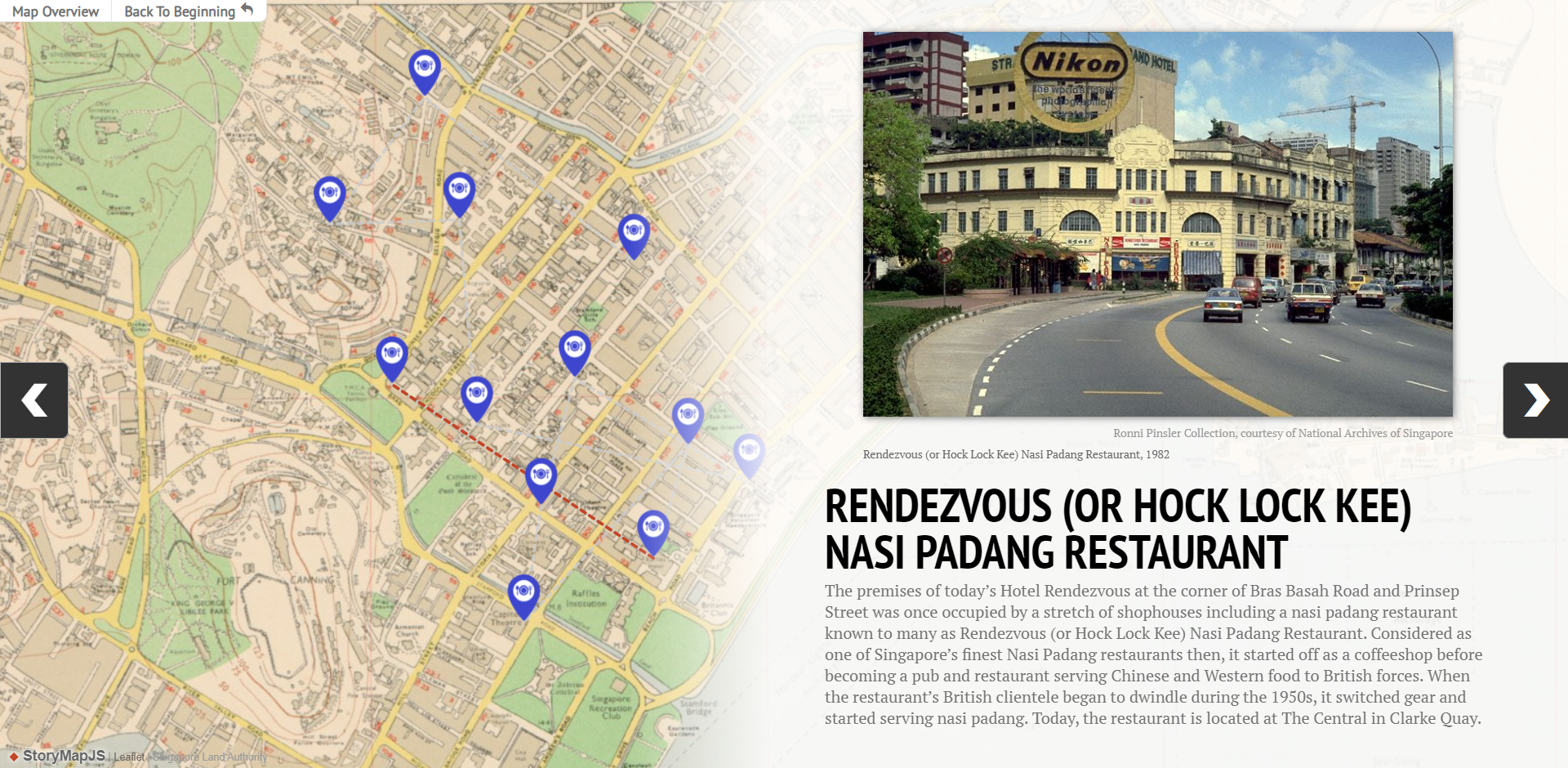Bras Basah: A Place For Food
A Place for Food
Besides leisure, Bras Basah was also known for its restaurants, coffee shops and cafes. Patronised by people from all walks of life, these places clearly show the long history of Singapore’s foodie culture. Below is a photo essay that highlights some of these eateries.
Rendezvous (or Hock Lock Kee) Nasi Padang Restaurant
The premises of today’s Hotel Rendezvous at the corner of Bras Basah Road and Prinsep Street was once occupied by a stretch of shophouses. Constructed during the early 1900s, they were known for their businesses which included a hotel, photography studios, sport equipment shops, bookshops and coffeshops. The most famous of them, however, was Rendezvous (or Hock Lock Kee) Nasi Padang Restaurant.
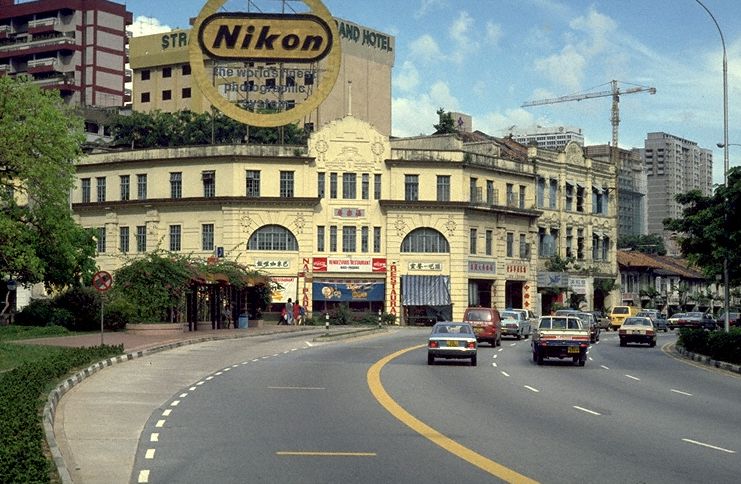 |
| Considered as one of Singapore’s finest nasi padang restaurants then, Rendezvous started as a coffeeshop before becoming a pub and restaurant serving Chinese and Western fare to British forces. (Image Credit: Ronni Pinsler Collection, courtesy of National Archives of Singapore) |
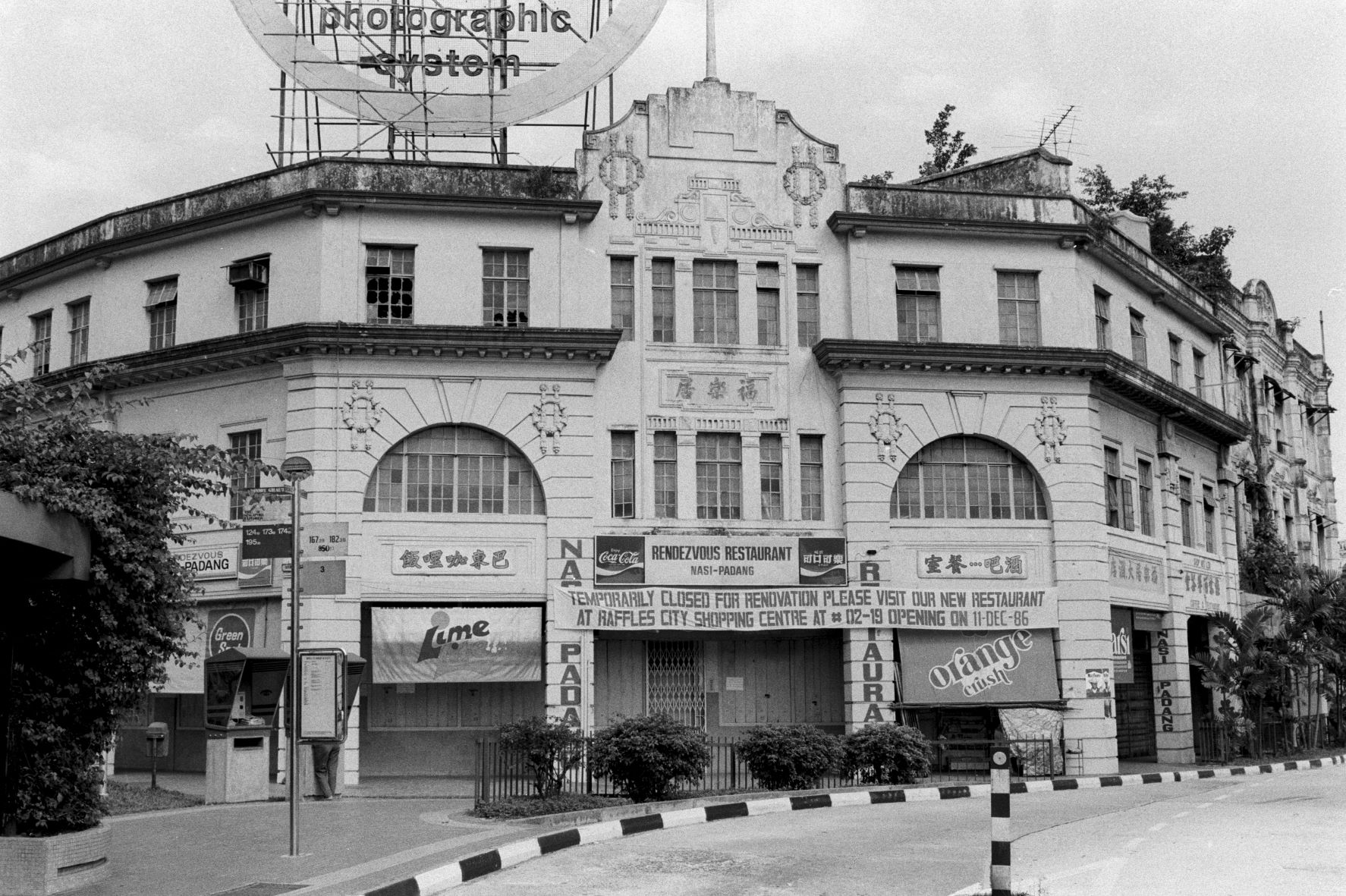 |
| When the restaurant’s British clientele began to dwindle during the 1950s, its then owner Seah Soo Khoon brought in a chef from West Sumatra and began serving nasi padang. (Image Credit: From the Lee Kip Lin Collection. All rights reserved. Lee Kip Lin and National Library Board, Singapore 2009) |
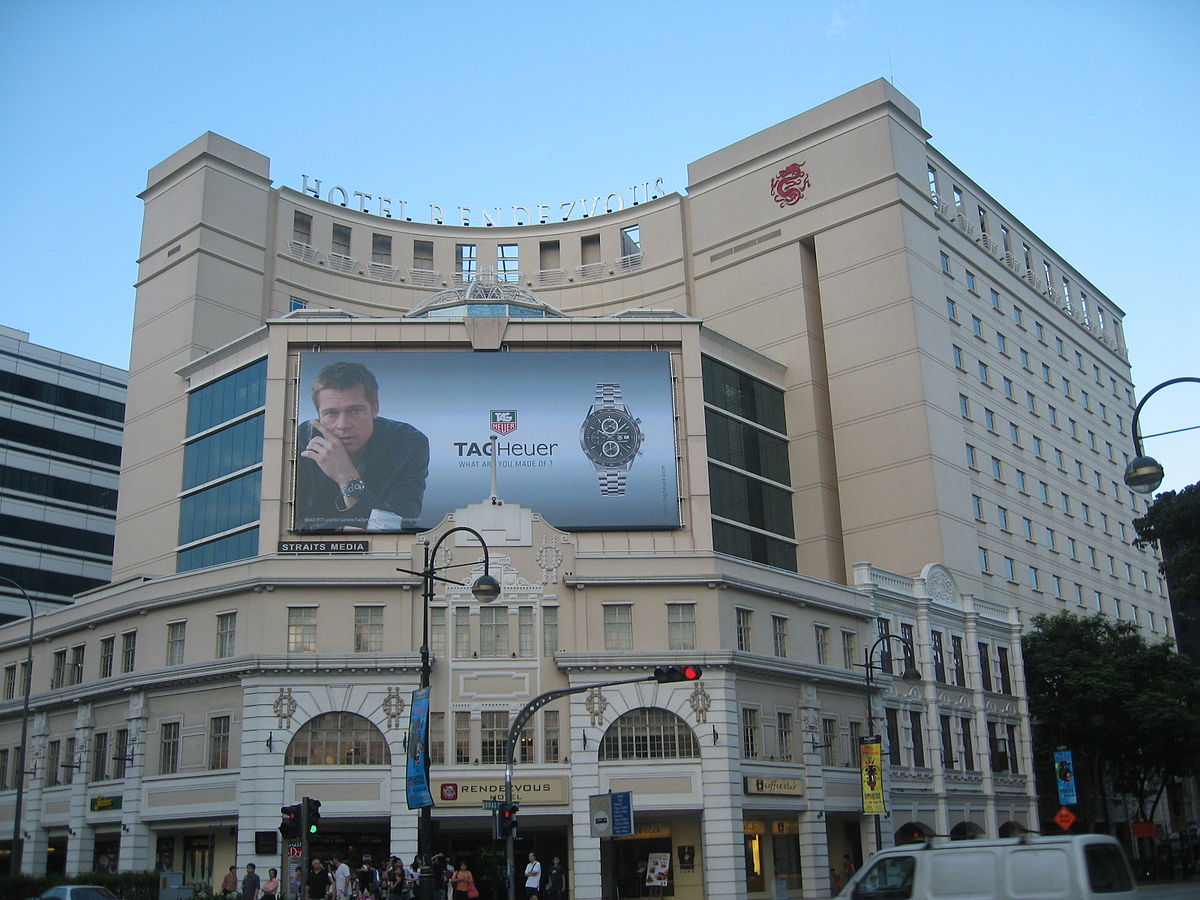 |
| In 1987, the restaurant moved from its Bras Basah premises to Raffles City. Today, it is located at The Central in Clarke Quay. However, its presence in Bras Basah was so iconic that the hotel that occupied its former site named itself after the restaurant. (Image Credit: Photo by Terence Ong via wikicommons) |
Watch this video by Singapore Best Food on the Rendezvous (or Hock Lock Kee) Nasi Padang Restaurant.
Local heritage enthusiast, Jerome Lim, is best know for his blog, "The Long and Winding Road", where he documents Singapore's evolving urban landscape through words and images. A student at St Joseph's Institution during the 1970s, Jerome has fond memories of Rendezvous Nasi Padang Restaurant. Click or tap HERE to reveal below what Jerome remembers about the restaurant. (Source: The Long and Winding Road)
"I do also have fleeting memories from my early childhood, of Rendezvous, a café of sorts, well known for its Nasi Padang, which my parents brought me to from time to time, which was located at the northern end of the road, in a shop house, where the Rendezvous Hotel is located now. I remember the glass windows decorated with gold letters, through which one could see the rows of Nasi Padang dishes displayed on the shelves of the glass cabinet beside the window."
Long Bar and the Singapore Sling
Long Bar in Raffles Hotel was among the oldest food establishments in the Bras Basah area. Sharing a history with the hotel itself, Long Bar was a popular haunt among plantation owners during the early 1900s and was commonly referred to as the ‘Rendezvous of Planters’ at the time.
 |
| Back then, Long Bar was not a formal bar. It comprised tables and chairs put up in the Cad Alley wing of the hotel facing Bras Basah Road. Patrons would sit at there while mingling and relaxing with their drinks and snacks. (Image Credit: Singapore Tourism Board Collection, courtesy of National Archives of Singapore) |
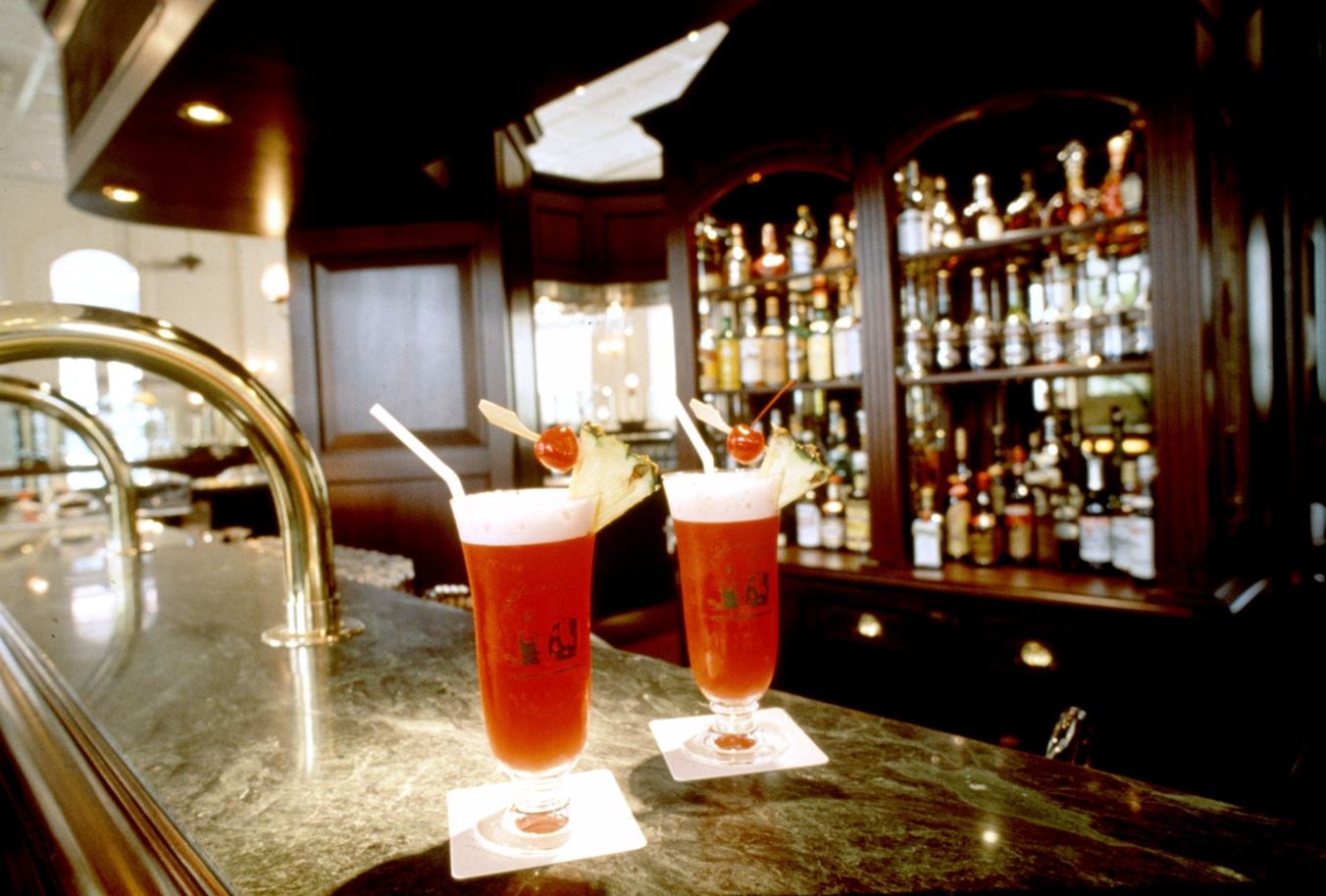 |
| Long Bar is most well-known as the birthplace of the Singapore Sling, which is an internationally recognised cocktail. It was created by the hotel’s bartender Ngiam Tong Boon in 1915. Primarily a gin-based cocktail, Ngiam made the beverage pink so as to allow the ladies at the time to consume it in the public. (Image Credit: G P Reichelt Collection, courtesy of National Archives of Singapore) |
In 2015, the Singapore Sling celebrates its 100th anniversary. Watch the video below by Raffles Hotel explaining the history of the iconic made-in-Singapore drink.
Interested to know what is inside the Singapore Sling? Click or tap HERE to reveal the answer below. (Source: Infopedia)
Recipe:
30 ml gin
15 ml cherry brandy
120 ml pineapple juice
15 ml lime juice
7.5 ml Cointreau
7.5 ml Benedictine DOM
10 ml grenadine
A dash of Angostura Bitters
1 slice pineapple
1 cocktail cherry
Instruction:
Place all ingredients in a cocktail shaker shake gently, and strain into a tumbler. Garnish with pineapple slices and a cherry.
Hainanese Chicken Rice
A ubiquitous sight in hawker centres across Singapore, the Hainanese chicken rice is also on the menu in many major restaurants and even hotel cafés. Regardless where it is found or how much it cost, this dish is more or less prepared this way: bite-sized slices of chicken — or a whole chicken if you’re eating as a big group — served with fragrant rice, spicy chilli and ginger paste. In Singapore, the Hainanese Chicken Rice is said to have taken root in areas like Middle Road and Purvis Street during the pre-war years. As such, Bras Basah could be seen as the place of origin for the beloved local fare.
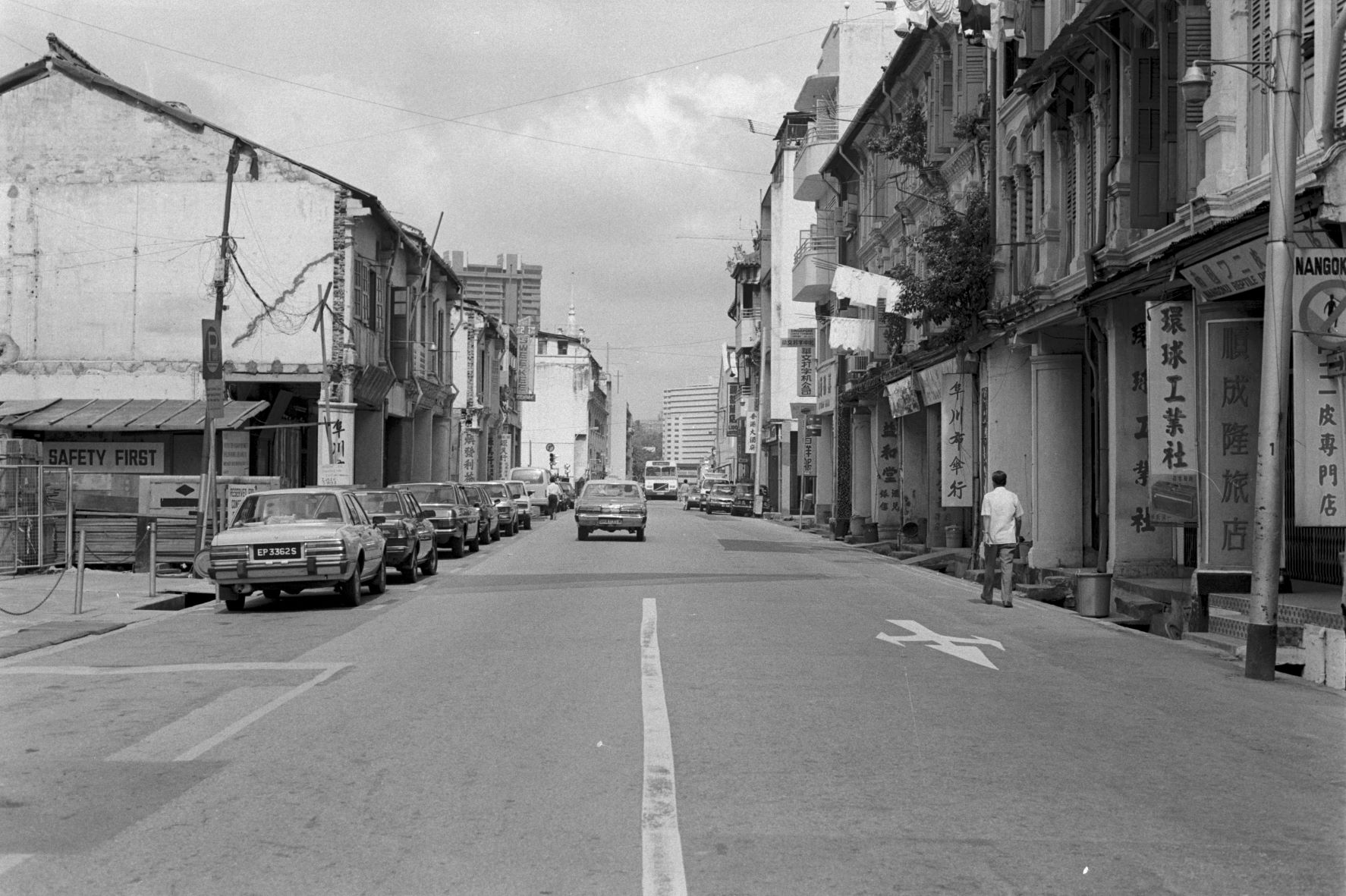 |
| As its name implies, Hainanese chicken rice has links to the Hainanese community. Hailing from Hainan province in China, the Hainanese, like the other Chinese communities here, formed enclaves and settled in different parts of Singapore, including Middle Road (pictured) in the Bras Basah area. (Image Credit: From the Lee Kip Lin Collection. All rights reserved. Lee Kip Lin and National Library Board, Singapore 2009) |
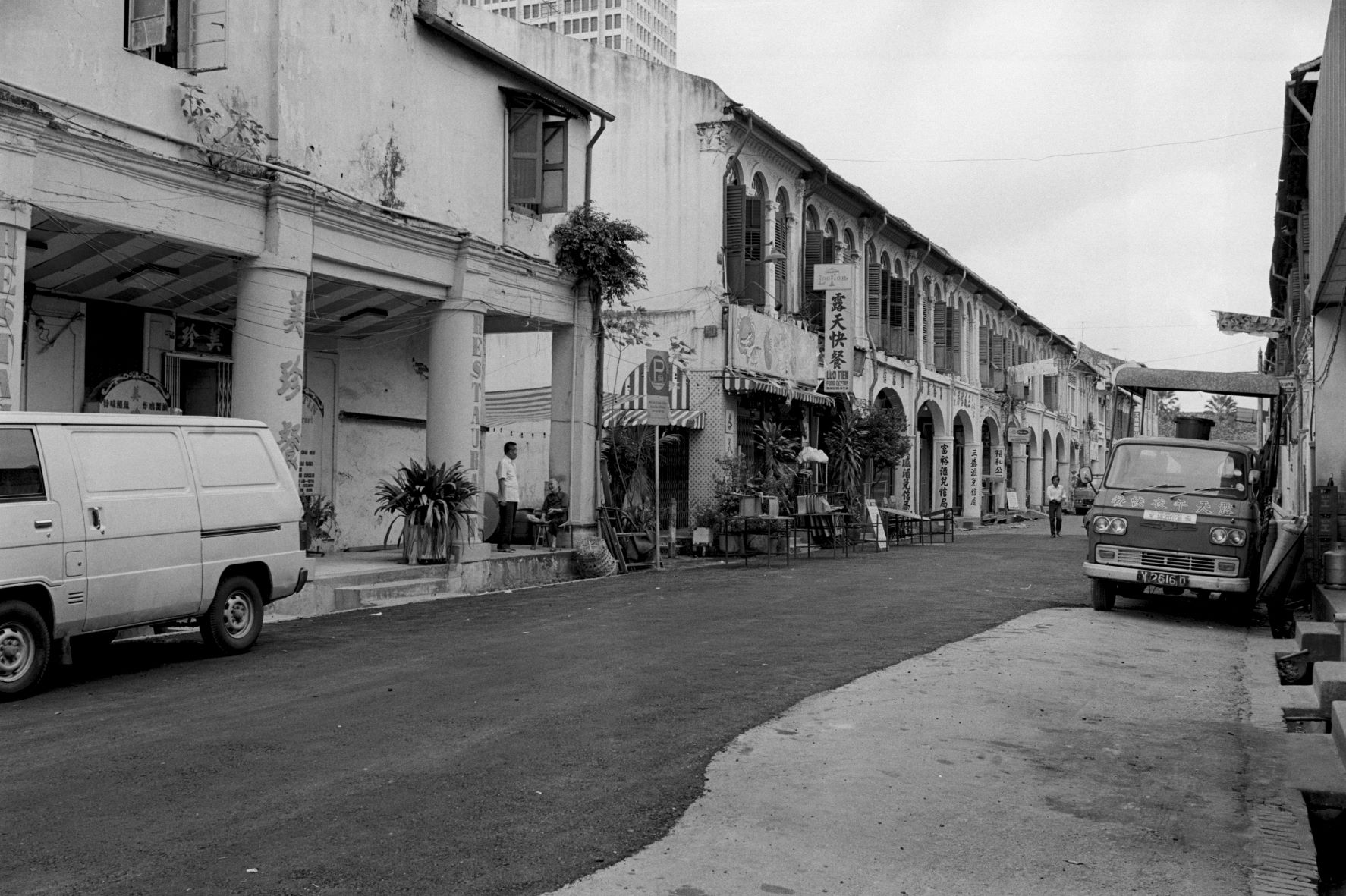 |
| In fact, the area around Bras Basah was a Hainanese enclave. Other than the presence of the Hainan Clan Association, which still stands prominently along Seah Street today, Middle Road, Purvis Street (pictured) and Seah Street were used to be called “Hainan First Street”, “Hainan Second Street”, and “Hainan Third Street” respectively. (Image Credit: From the Lee Kip Lin Collection. All rights reserved. Lee Kip Lin and National Library Board, Singapore 2009) |
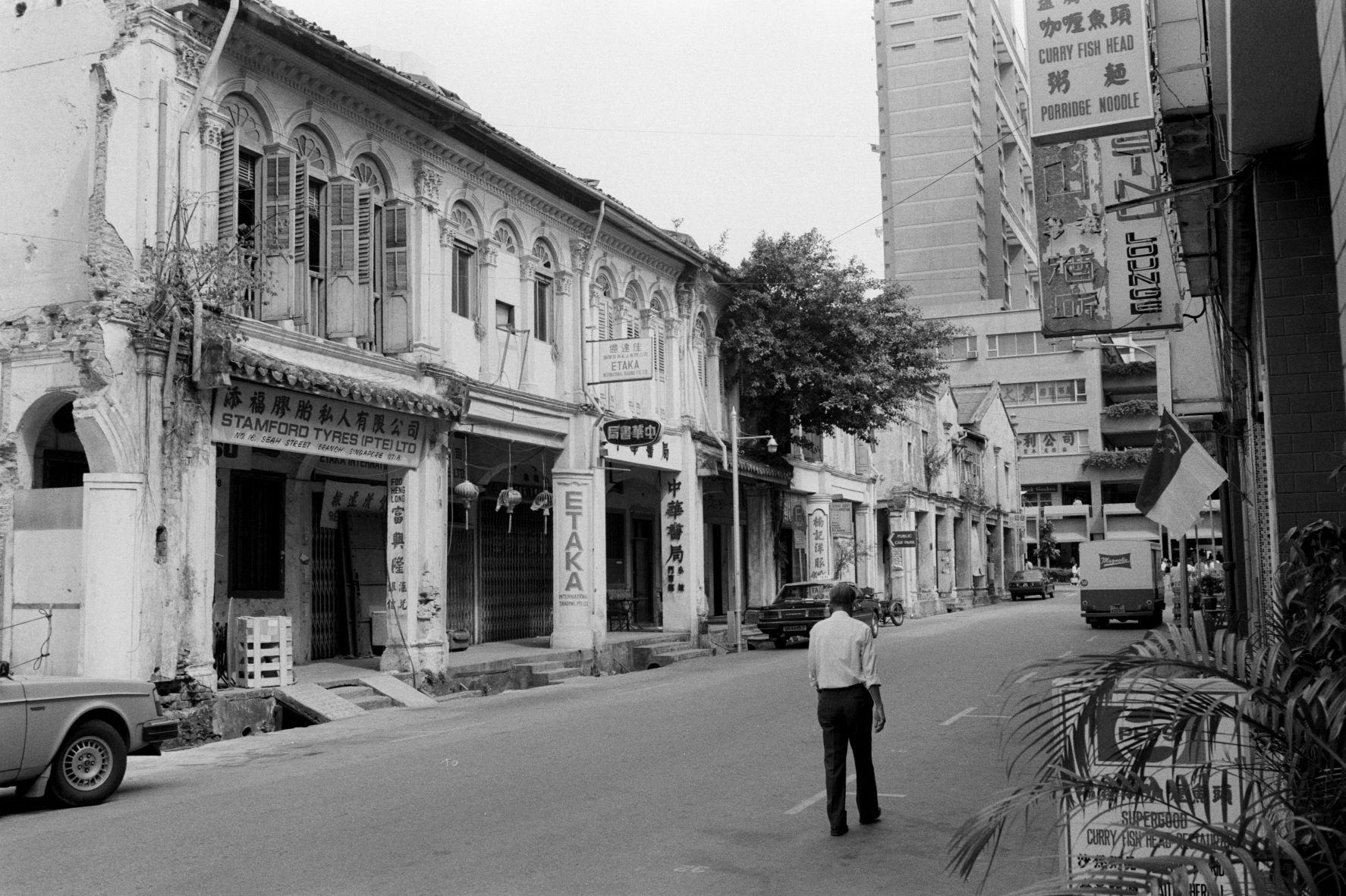 |
| However, the Hainanese chicken rice was not the only famous delicacy that they created. There were others including Hainanese-inspired Western dishes (think Hainanese pork chops) and our local Nanyang coffee which in turn led to the creation of kopitams (or coffee shops). Today, eateries serving these Hainanese food including the Hainanese Chicken Rice can still be found in the area including the above Seah Street. (Image Credit: From the Lee Kip Lin Collection. All rights reserved. Lee Kip Lin and National Library Board, Singapore 2009) |
Want to learn more about the Hainanese Chicken Rice? Click or tap HERE to reveal below a concise history of this beloved dish written by the Singapore Tourism Board. (Source: Visit Singapore Official Site)
"The recipe for the dish is adapted from early Chinese immigrants from Hainan Island, off the southern coast of China. Back in Hainan, locals call the dish "Wenchang chicken". They use a particular fowl that is bony and fibrous, and serve the chicken with oily rice. A ground green chilli dip rounds off the dish.
[In Singapore], [t]he cooking method hails back to its Hainanese roots, with a few uniquely [local] twists. The chicken is steeped in boiling water or blanched till it is fully cooked, before soaking it in cold water to ensure the meat remains tender. In a local twist, the chicken can also be roasted or braised in soya sauce for a different taste...It is, however, the rice and chilli sauce that can make or break the dish. The rice, cooked in chicken stock with ginger and pandan leaves, should have just the right amount of oiliness, while the chilli must possess the right blend of both spiciness and sourness."
You can also watch this video to see how prominent local food consultant and founder of Makansutra KF Seetoh prepares the dish.
SG50 Deliciously Singaporean: Chicken Rice
Red House (Baker’s Bakery)
At the junction of Bras Basah Road and Victoria Street opposite present day CHIJMES where the Carlton Hotel now stands, there used to be a bakery called Baker’s Bakery and Confectionery or better known as Red House. Due to its reasonably priced set meals as well as signature cakes and curry puffs, it was very popular among residents and students from schools in the area. The Red House was also said to be where eminent local watercolourist Ong Kim Seng would meet fellow painters every Sunday before heading to the Singapore River to paint during the 1960s.
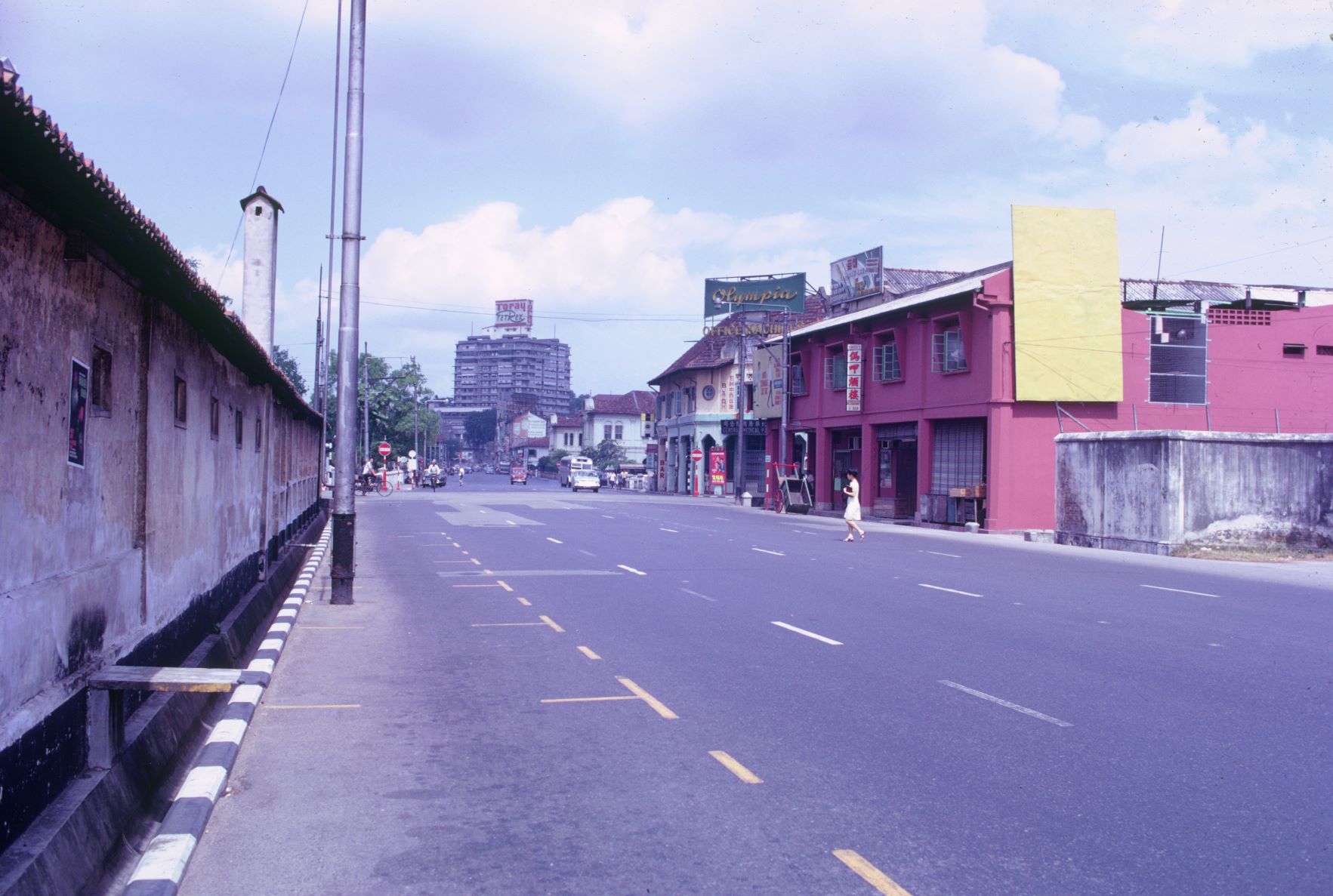 |
| A photograph showing the junction of Bras Basah Road and Victoria Street (circa 1972) with the Red House visible on the right. (Image Credit: From the Lee Kip Lin Collection. All Rights Reserved. Lee Kip Lin and National Library Board Singapore 2009) |
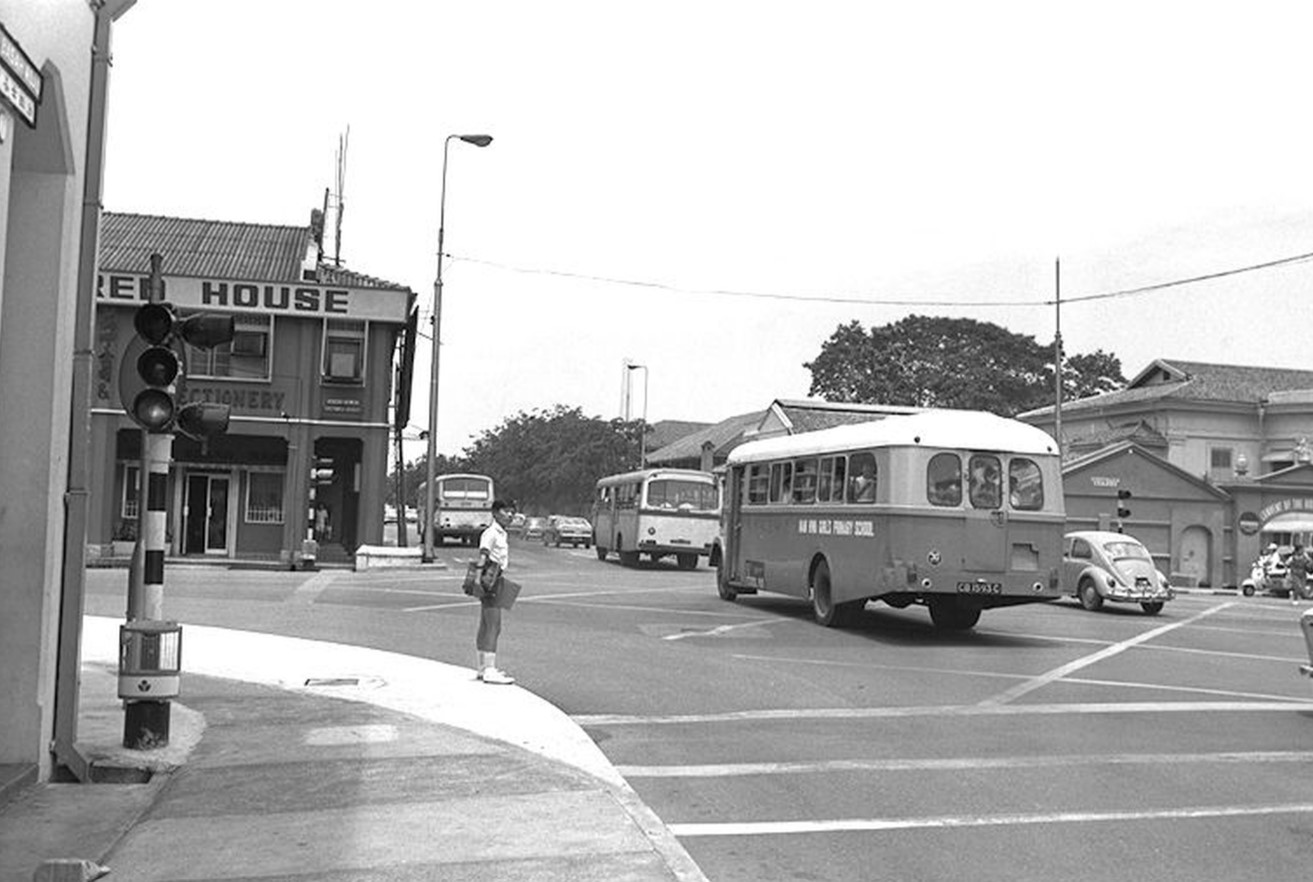 |
| This bakery, with its signage being partially obscured above on the left, was a popular haunt for the residents living in area and students studying at nearby schools. It was famous for its signature cakes and curry puffs. (Image Credit: The Straits Times © Singapore Press Holdings Limited. Reprinted with permission) |
Click or tap HERE to reveal below what Sister Dolores Healy from the former CHIJ remembers about the Red House in her 2001. (Source: National Archives of Singapore)
"Oh yes, I was telling you the Red House over here near the entrance [of CHIJ]. This was the entrance and the Red House was at the top of Bras Basah Road, the corner of Bras Basah Road and Victoria Road. It was very famous, it was patronised by all the inmates of CHIJ and I am sure by many more. We got our fresh white bread from there in the morning. It was about the best part of our breakfast."
Magnolia Snack Bar
Before Swensen’s and Haagen Dazs, Singaporeans after a sweet treat would head down to the Magnolia Snack Bar at Capitol Building. Opened as Creameries Milk Bar in 1937 within the premises of Capitol building, the Magnolia Snack Bar was a popular venue for social gatherings for both the young and old. It was also the go-to place for pre- and post-movie bites.
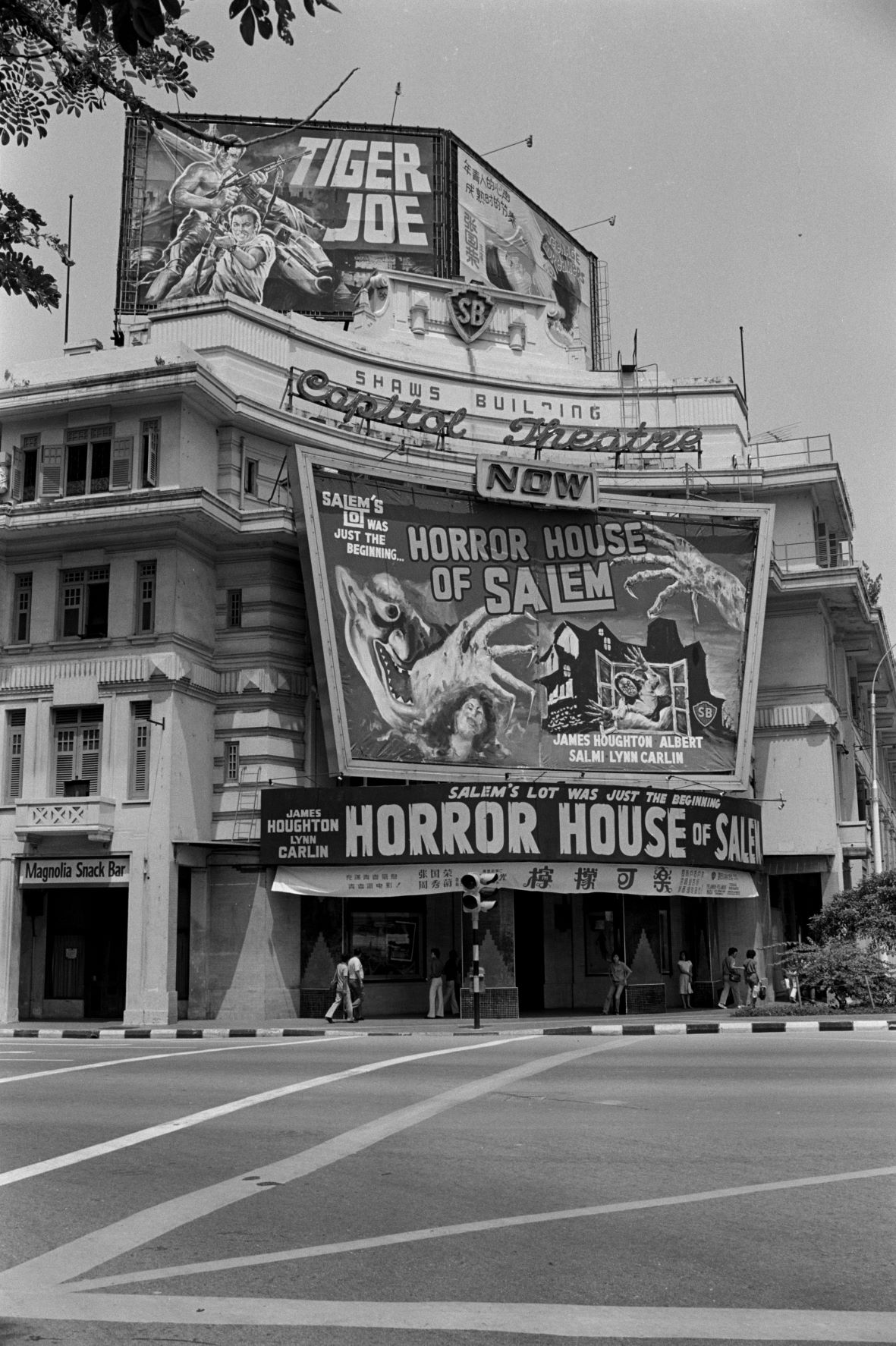 |
| Also referred to as “Magnolia Milk Bar”, the diner, as seen on the extreme left of the photograph above, was well-known for its milkshakes and house brand ice creams along with sandwiches, hot dogs and hamburgers. The joint was also fondly remembered by Prime Minister Lee Hsien Loong who said in a 2001 interview that it was “something special” to visit the snack bar when he was a young boy and his grandmother would bring him and his two siblings there for ice-cream. (Image Credit: From the Lee Kip Lin Collection. All rights reserved. Lee Kip Lin and National Library Board, Singapore 2009) |
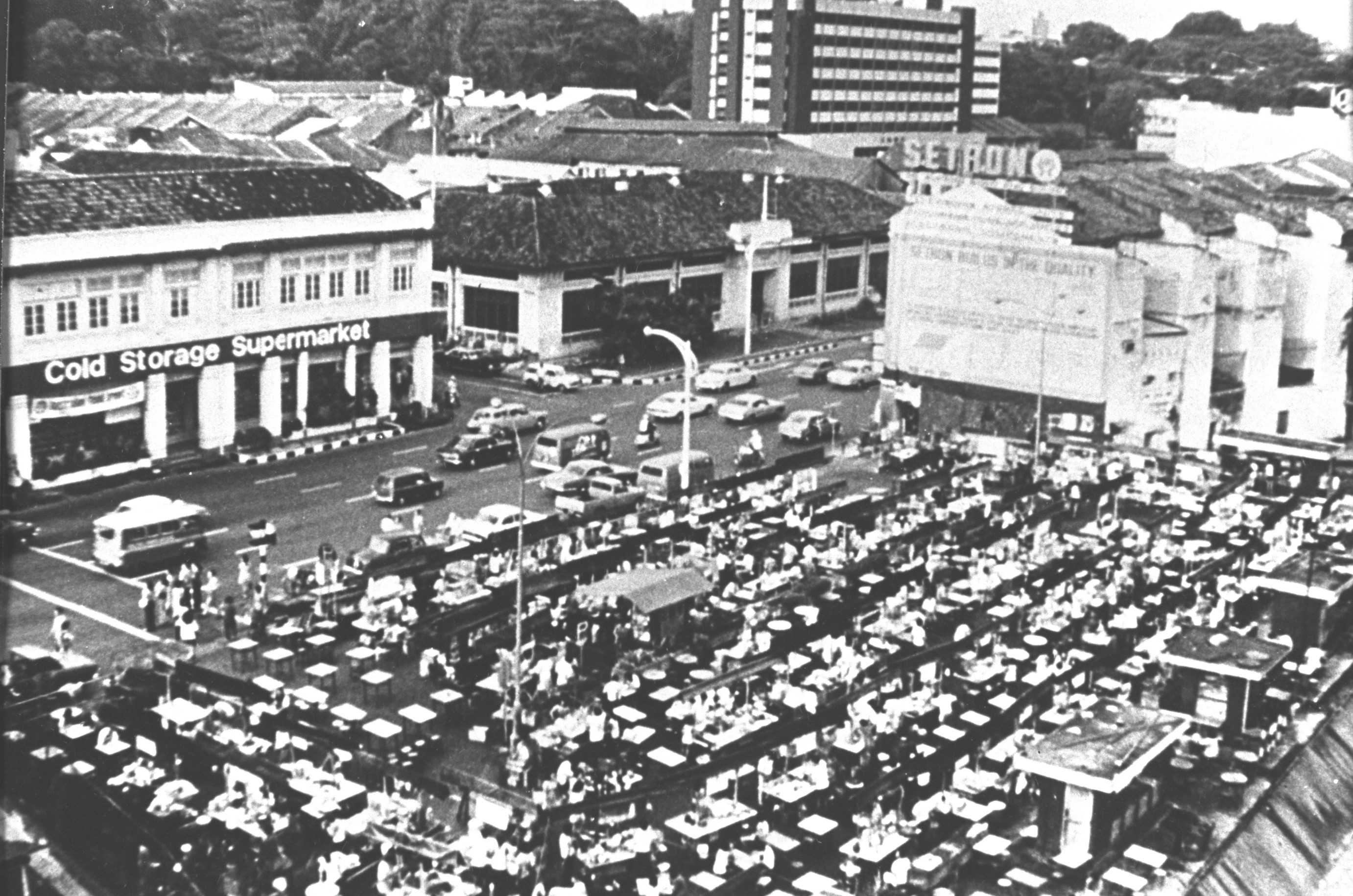 |
| The snack bar was owned by the supermarket chain Cold Storage (seen above on the left). During its heyday, the popular haunt had 20 branches across Singapore including Orchard Road. However, all of them had wound up by 1988. (Image Credit: Ministry of Information and the Arts Collection, courtesy of National Archives of Singapore) |
So, what exactly can you find in the Magnolia Snack Bar? Click or tap HERE to reveal below a 1984 account of the restaurant by Violet Oon, a reporter from The Singapore Monitor. (Source: NewspaperSG)
"The most fascinating thing about eating there is the menu which has preserved the Fifties touch featuring such old fashioned names as Merry Widow ($2.75), Knickerbocker Casablanca ($3.20) and Pear Berry Fantasy ($2.70). Then there are the old colonial dishes of Pork Sausages, Eggs with Toast and Butter, Peas and Chips for $3.90, Chicken Curry with Rice and condiments for $5.90 and Fish and Chips with toast and butter for $6.50. I had thought a snack bar like that would have gone out of fashioned with its vinyl floors, old-fashioned and no-frills décor and plain service…Yet the ambience was surprisingly pleasant and had the air of a haven away from the frenzy of city life. It is air-conditioned and a pleasant place to go to if you intend to meet some friends where the conversation and company counts more than the food…it [can also be] a place for dating, as a meal there for two can cost under $20 and the bus stops are located nearby."
Street Hawkers of Old Bras Basah
From the pre-war years until the late 1970s, the streets of Bras Basah, like many parts of the city, were lined with street hawkers. One of Singapore’s most valuable heritage traditions, food hawking has been around since the early 1800s, a livelihood for early immigrants of the island.
 |
| A 1963 photograph of a back alley occupied by street hawkers. (Image Credit: Ministry of Information and the Arts Collection, courtesy of National Archives of Singapore) |
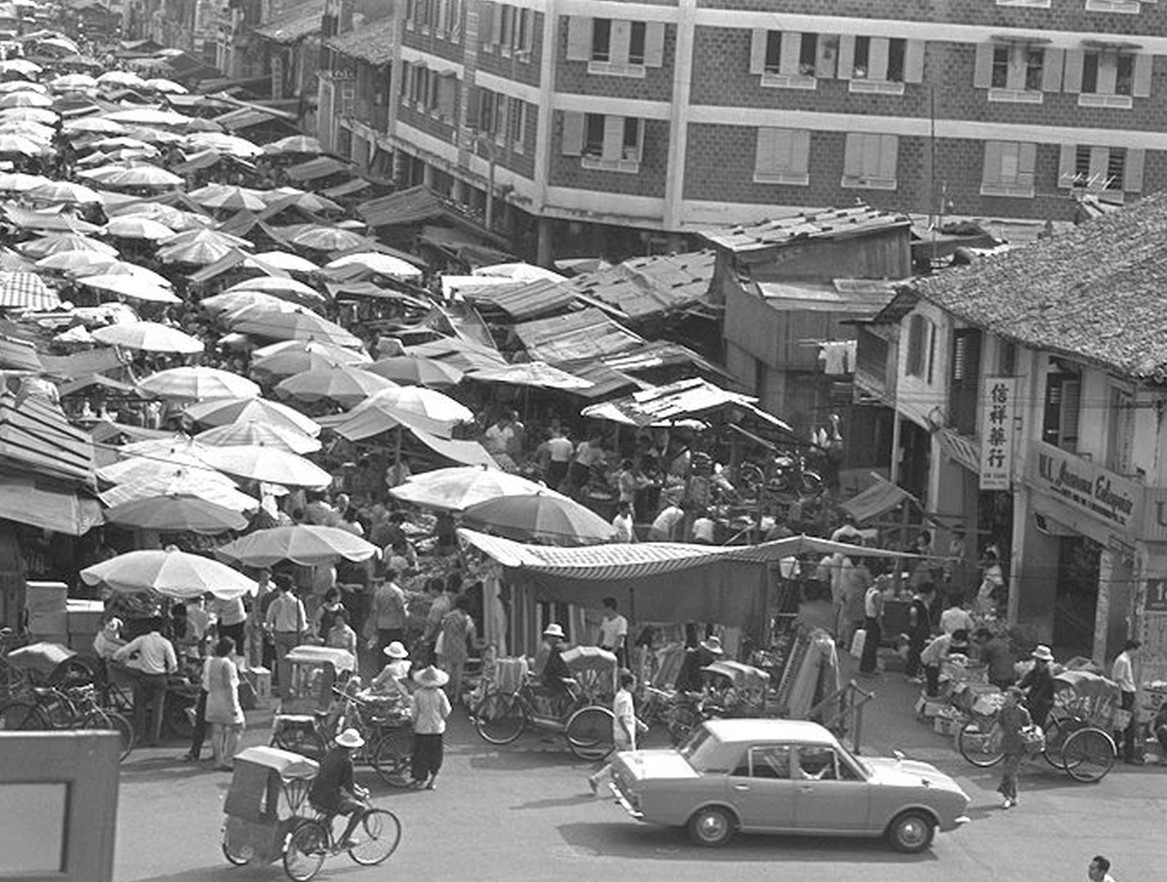 |
| The street hawkers of old Bras Basah could be found on roads such as Middle Street and Queen Street. It was said that the former was lined with mostly Malay hawkers, while the latter Chinese. (Image Credit: The Straits Times © Singapore Press Holdings Limited. Reprinted with permission) |
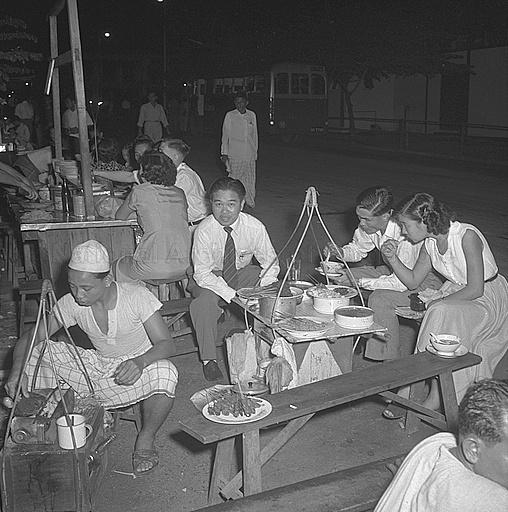 |
| A hawker selling satay (pieces of barbequed meat on a skewer) along Beach Road in 1955. One of the most popular street foods in the area was satay. In fact, today’s Satay Club at Gardens by the Bay started along a now expunged short thoroughfare near Middle Road known as Hoi How Road (shown above). (Image Credit: The Straits Times © Singapore Press Holdings Limited. Reprinted with permission) |
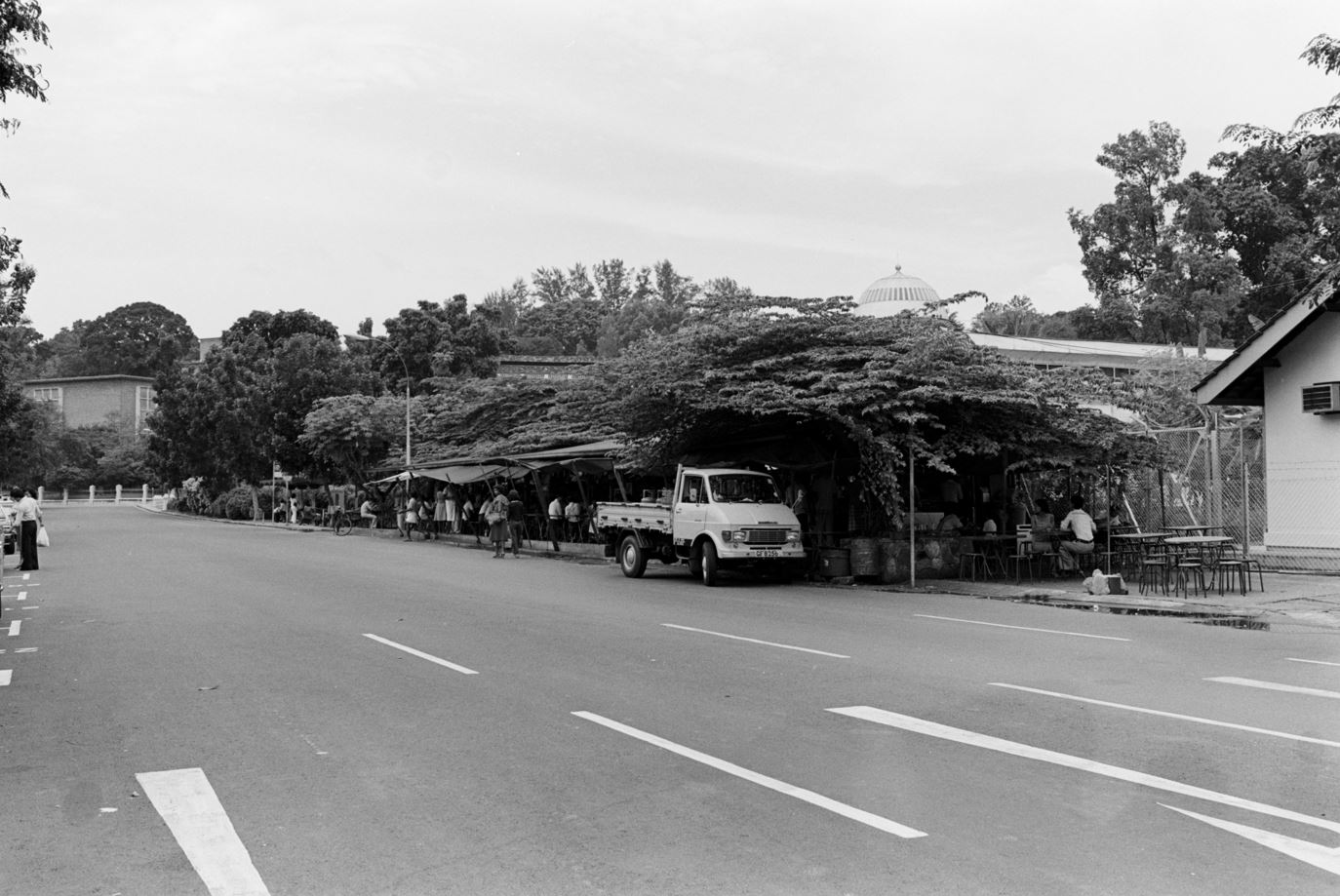 |
| Waterloo Street was another place in Bras Basah where street food was sold. Famous for its Indian rojak and sarabat stalls - or drink stalls that sell local coffee, tea, soft drinks or “serbat” which means “ginger tea” or more commonly known as “teh halia”. Some of these stalls were generations old, with their origins dating as far back as the late 1800s. (Image Credit: From the Lee Kip Lin Collection. All rights reserved. Lee Kip Lin and National Library Board, Singapore 2009) |
Rudolph William Mosbergen, founding principal of Raffles Junior College and captain of the Singapore hockey team at the 1956 Olympics, vividly recalls the bustling street hawker scene of Waterloo Street in his 2005 oral history interview. Click or tap HERE to reveal below what he shared. (Source: National Archives of Singapore)
"Now the attraction of Waterloo Street, of course, was that there were a number of stalls [there] which were very famous food stalls. Particularly, Indian food, Indian rojak, Indian fried mee, mee rebus, things like that. There was also one of these Sarabat stall. The fellow at the sarabat stall, if you wanted tea and so on, he was able to do, what they called, a 'taerk'. Which means as he is cooling it, he pours it. And as he pours it the distance gets bigger and bigger but he managed to get all the tea back into this container. He tosses up the tea and he picks it up on that side. Oh, it was really something."
Besides Mosbergen’s account, independent filmmakers including digital video publisher Our Grandfather Story also created the video below to help us learn about the dish that gave Waterloo Street its food heritage trademark - the Indian Rojak.
“Flavours of Waterloo Street - Indian Rojak” by Our Grandfather’s Story
 |
| In addition to Indian Rojak, tau huay (soya beancurd) was another type of food that could be found among the street hawkers in the area between the 1950s and 1970s. One of the most popular stalls at the time was located at the intersection of Beach Road and Rochor Road. Operated by Xu Jun Jie and his wife Madam Tan Jin Jiao through a pushcart similar to the one above, their tau huay was known for its super-smooth texture. It still can be found today in the Rochor Original Beancurd shop in Short Street. (Image Credit: Ronni Pinsler Collection, courtesy of National Archives of Singapore) |
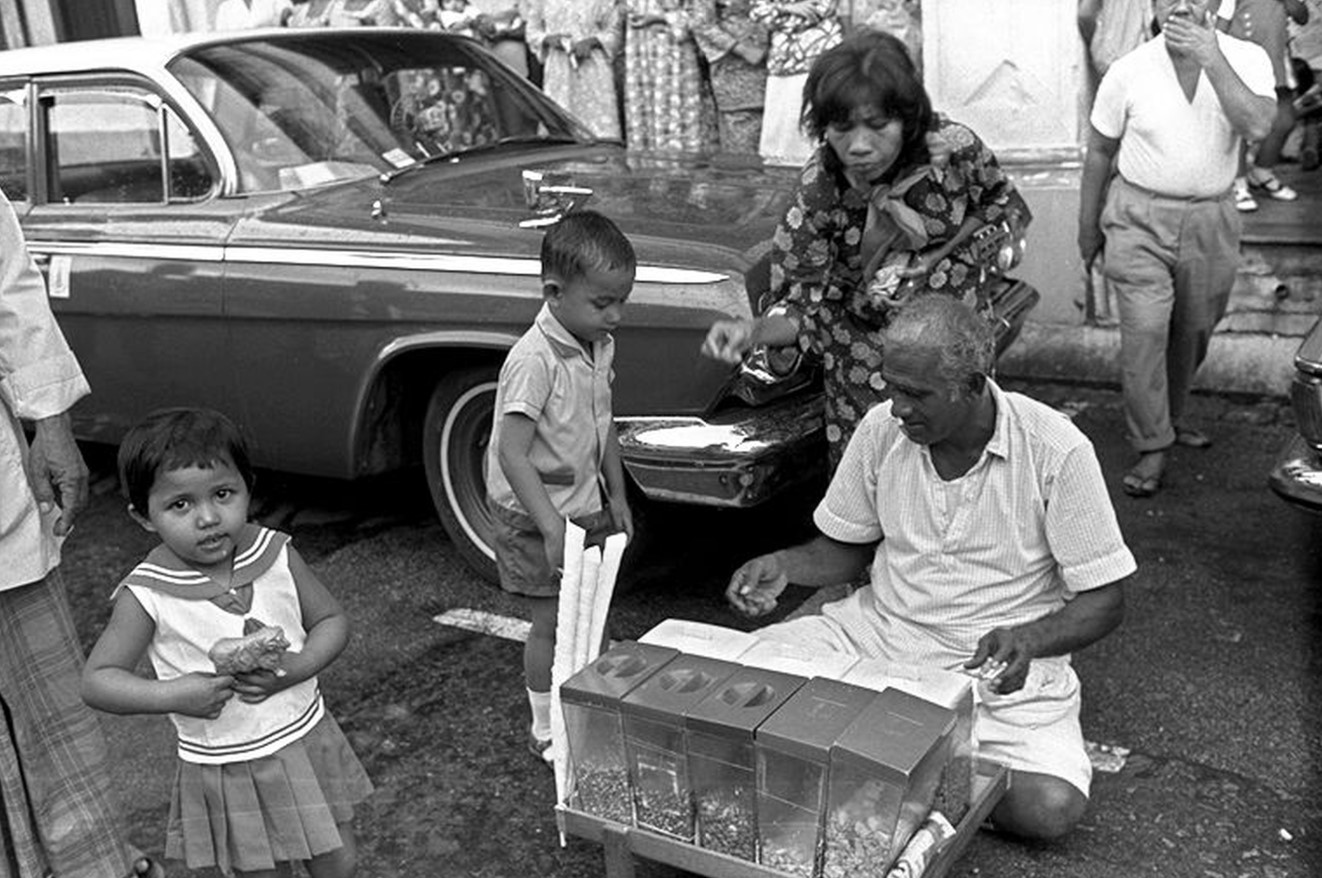 |
| “Kacang Puteh”, which means “white nuts”, refers to the sugar-coated peanut snack. Sold by immigrants from India, it was among the most popular street food between the 1950s and 1970s. The street vendors selling the snack would usually wrapped the nuts in thin paper cones made from pages ripped out of old newspapers, magazines and school exercise books. They would sell a variety of up to 20 kinds of nuts and snacks such as steamed nuts, fried peanuts in crispy batter as well as the muruku. By the 1990s, these street vendors had mostly disappeared from the streets and could be found only in cinema lobbies. If you want to try it out today, they are still by a Mr Amirthaalangaram Moorthy in front of Peace Centre. (Image Credit: The Straits Times © Singapore Press Holdings Limited. Reprinted with permission) |
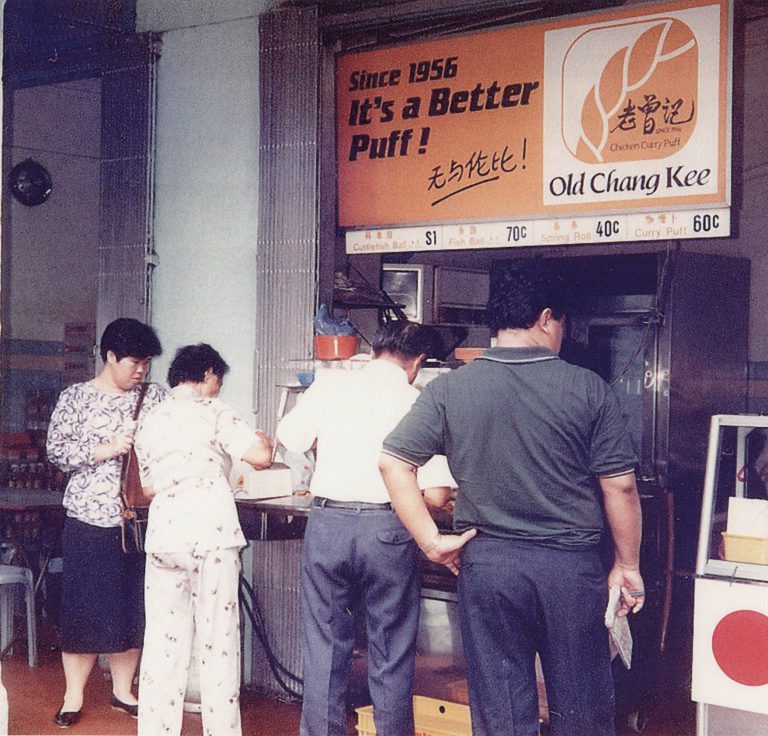 |
| Another food that has a connection with the cinemas of old Bras Basah is the curry puff. Perhaps the most famous was the “Rex curry puffs”. As the name implies, they were found at a stall in a coffee shop near Rex Cinema on Mackenzie Road. Selling one curry puff at 35 cents, the stall was opened by an Hainanese immigrant called Chang Chuan Boon in 1973. Previously, Chang sold his puffs as a street hawker at Koek Road before moving to Albert Street and then Mackenzie Road. Today, although Rex Cinema is no longer around, Chang’s curry puffs are still highly sought in Singapore through an islandwide network of stalls known as Old Chang Kee. (Image Credit: Courtesy of Old Chang Kee) |
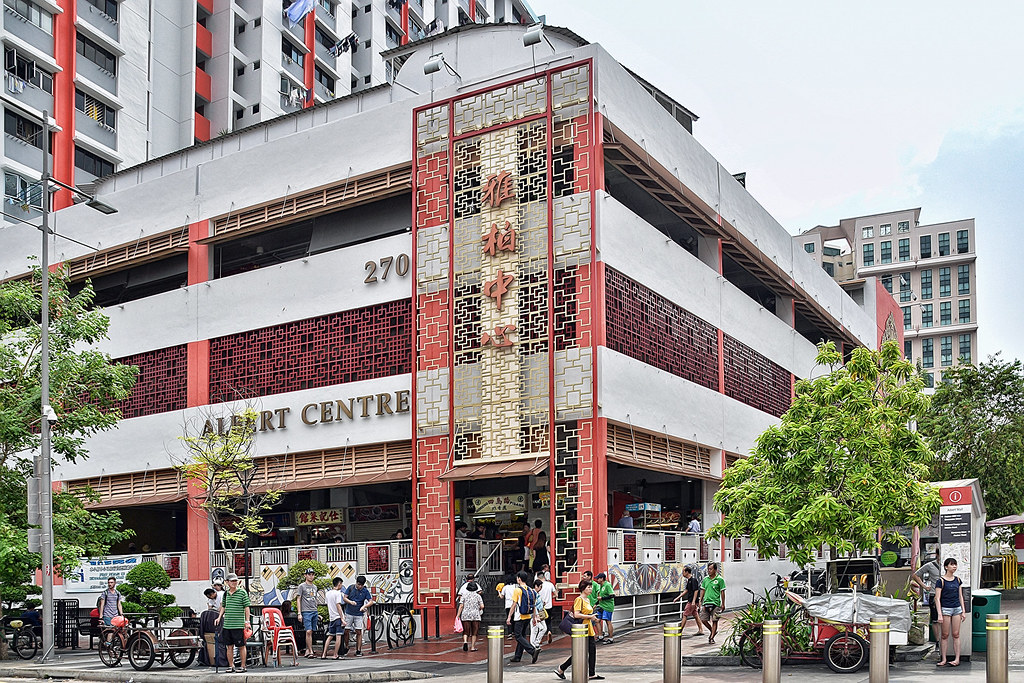 |
| Today, the street hawkers of old Bras Basah have been relocated to proper hawker centres such as the above Albert Centre Market and Food Centre where the standards of safety and hygiene are much higher. Although authorities had been trying to move hawkers from the streets since the colonial period, it was only during the late 1970s that they were successful. This was mostly due to the more direct approach taken by the then Ministry of Environment. Despite the shift, the government was aware of the intangible influence that these hawkers have on the culture of Singapore. To see how they were being feted as a national treasure, you can watch the video below by the National Heritage Board. (Image Credit: Photo by Choo Yut Shing via Flickr) |
“Hawker Culture in Singapore – What it Means to Singaporeans” by the National Heritage Board
Explore This Food Map of Old Bras Basah
Geo-tagged on the map below are the locations of the various eating places featured in this section. Click on the map below to find out where they once located.


